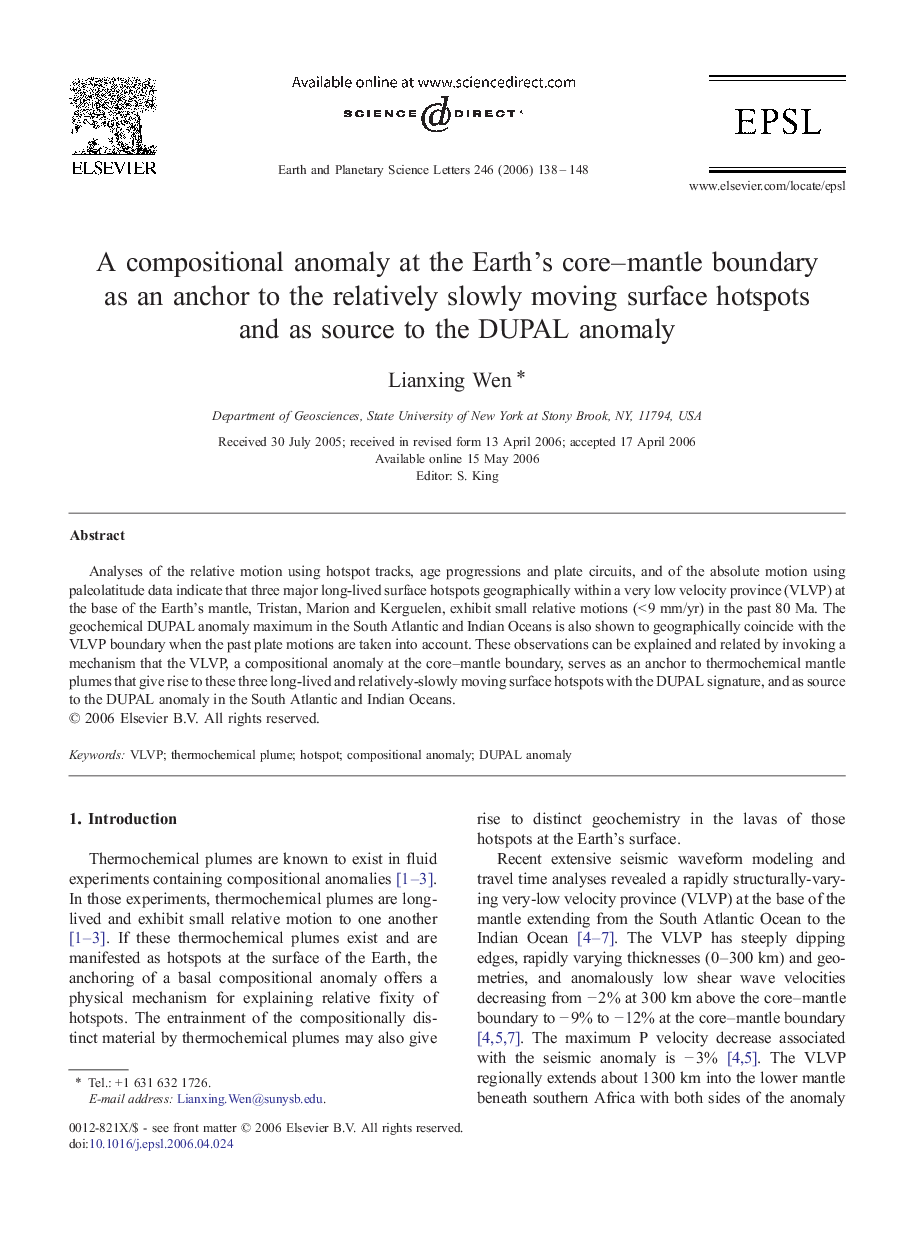| Article ID | Journal | Published Year | Pages | File Type |
|---|---|---|---|---|
| 4680976 | Earth and Planetary Science Letters | 2006 | 11 Pages |
Analyses of the relative motion using hotspot tracks, age progressions and plate circuits, and of the absolute motion using paleolatitude data indicate that three major long-lived surface hotspots geographically within a very low velocity province (VLVP) at the base of the Earth's mantle, Tristan, Marion and Kerguelen, exhibit small relative motions (< 9 mm/yr) in the past 80 Ma. The geochemical DUPAL anomaly maximum in the South Atlantic and Indian Oceans is also shown to geographically coincide with the VLVP boundary when the past plate motions are taken into account. These observations can be explained and related by invoking a mechanism that the VLVP, a compositional anomaly at the core–mantle boundary, serves as an anchor to thermochemical mantle plumes that give rise to these three long-lived and relatively-slowly moving surface hotspots with the DUPAL signature, and as source to the DUPAL anomaly in the South Atlantic and Indian Oceans.
